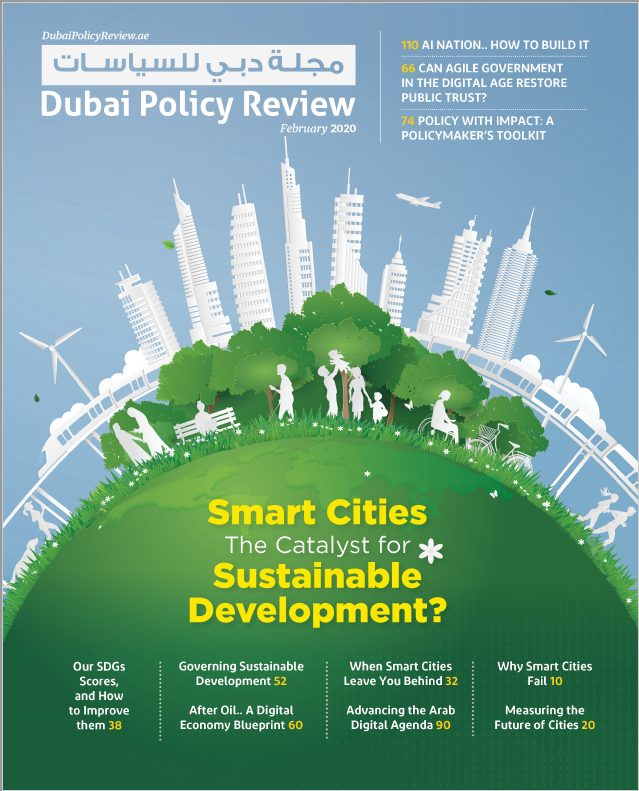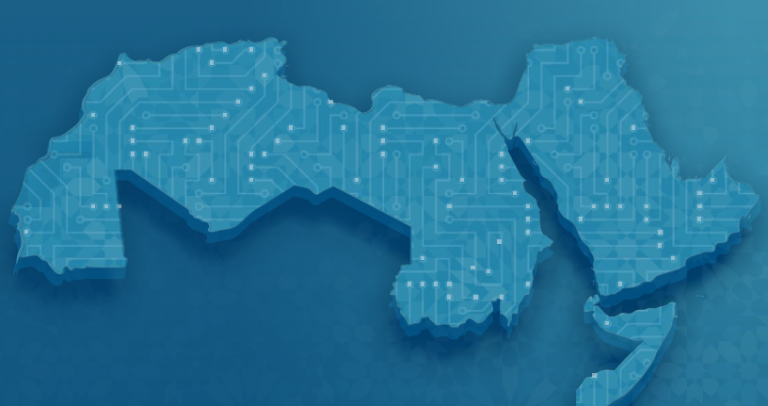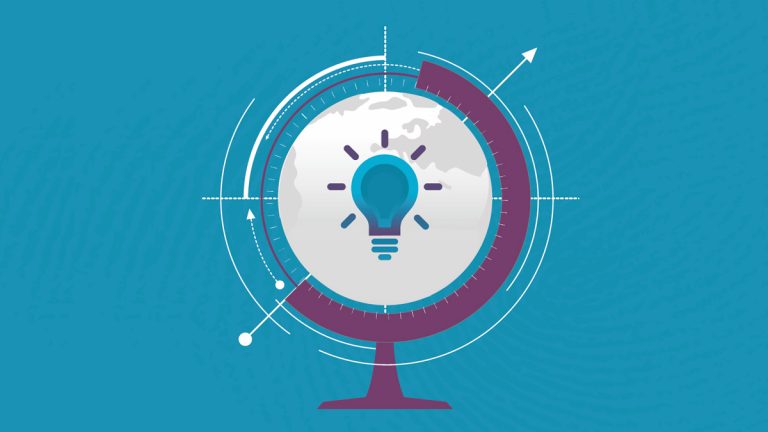Achieving the SDGs will not be easy. Any progress will require governments to work across policy areas and overcome the well known obstacles to joined-up government. For example, immediate economic and social pressures often crowd out longer term strategic policy initiatives. Public budgets and accountability systems are usually aligned with departemental structures and have difficulty tracking outcomes that occur in multiple policy areas and across multiple levels of government. An unprecedented range of public and private actors will need to be consulted and participate in both policy formulation and implementation around the SDGs. How can institutional mechanisms and policy coherence support the shift from traditional siloed policy-making to more integrated approaches? How can such approaches balance short- and long-term interests in the pursuit of sustainable development?[1]
The Sustainable Development Goals (SDGs) set a roadmap for a better world. One where poverty, hunger, disease, climate change and gender inequality are no longer a threat to our planet and wellbeing. Instead, they chart a world where decent jobs for all, sustainable infrastructure, clean oceans and energy, responsible consumption and production, clean water and sanitation, and quality education, become the norm.
If we are serious about achieving these ambitious goals within just over ten years, we must accelerate progress. For that to happen, we need to mobilize financial resources, but we also need to boost the capacity of governments to plan, to coordinate, to act, and to serve as a catalyst in support of SDGs implementation.
The Enormous Governance Challenge
How can we turn policy commitments and principles into actionable tools for sustainable development? Advancing on the SDGs represents a complex governance challenge. The indivisible, interdependent and inter-generational nature of the SDGs implies a need for governments to rethink their organization and working methods. However, in practice, governments face considerable obstacles to overcome traditional siloed policy making. Countries struggle to create a ‘whole-of-government’ approach to addressing the SDGs, and implementation efforts often remain disconnected from the mainstream policy agenda. For example, the SDGs are not yet integrated in core governance mechanisms such as budget and public procurement systems. There are also frequent gaps in the leadership skills and competencies required to deliver on such a cross-cutting agenda. Monitoring and evaluation systems for the SDGs remain at an early stage in many countries. Another challenge is to ensure that domestic policies contribute to global sustainability, while avoiding negative economic, social and environmental externalities beyond national borders, and for future generations.[2]
Countries are making considerable efforts to meet these challenges and progress has been made in many areas. Yet, stronger partnerships and platforms are needed where countries can come together to share best practices and learn from each other’s experience with governance for the SDGs. One such platform is the recently launched OECD-UNDP Global Hub on Governance for the SDGs that can provide the support that countries need to turn policy commitments and principles into actionable tools for sustainable development.
Overcoming Institutional Silos: A No One-size-fits-all Approach
Policies, action plans and strategies for achieving the SDGs require organizational support that transcends compartmentalized structures of government. An integral part of good governance, policy coherence for sustainable development (PCSD) offers the means for overcoming institutional silos and fragmented action. While there is no one-size-fits-all approach for ensuring coherent SDG implementation, experience shows that the ability to consistently develop and implement coherent policies in all areas is dependent on the processes, systems, structures and tools used by governments to manage and co-ordinate policy at all levels.[3] So what are the enablers for accelerating progress on the SDGs?
"HOW CAN WE TURN POLICY COMMITMENTS AND PRINCIPLES INTO ACTIONABLE TOOLS FOR SUSTAINABLE DEVELOPMENT?"
Accelerating the SDGs: The Driving Principles[4]
I – Vision and Leadership: How to Lead the SDGs Implementation?
Step 1: Build strong, inclusive political commitment and leadership
Strong political commitment and leadership are preconditions for fostering ‘whole-of-government’ action and policy coherence. Explicit, public political commitment to sustainable development expressed at the highest levels and backed by strategies, action plans, policies, legislation, instructions and incentives is essential to enable all branches and levels of government to pursue the SDGs in a coherent manner. Strong political leadership also helps to build ownership across government and among key actors, and facilitates the enactment of specific measures to avoid policies in different sectors conflicting with or undermining each other.
Many countries have longstanding commitments to sustainable development and policy coherence. Sweden’s Policy for Global Development has promoted policy coherence since 2003, and a relaunch of the policy in 2014 specifically linked these efforts to the SDGs. In other countries, the commitment to sustainable development is more recent. In Egypt, the government’s political commitment to the SDGs has led to the development of the country’s first-ever sustainable development strategy, which is also being used to guide ongoing government-wide reform efforts.
Step 2: Define, implement and communicate a strategic long-term vision
In adopting the 2030 Agenda, world leaders committed to "implement the Agenda for the full benefit of all, for today’s generation and for future generations". Long-term vision and planning horizons are essential for supporting present and future needs in a balanced manner. They are also fundamental for ensuring that efforts on SDG implementation go beyond electoral cycles, government programmes or cabinet compositions.
Governments around the world have adopted long-term perspectives in developing strategies and implementation plans for the SDGs. Slovenia, Finland and Belgium, for example, have used long-term visions with a timeline up to 2050 to design their national sustainable development strategy. In Ireland, implementation of the SDGs falls under Project Ireland 2040, which sets out ten objectives consistent with the SDGs. In an innovative approach to ensure long-term responsibility, Norway has established a fund to save for future generations and compensate for a loss of petroleum revenues. Countries’ efforts to promote sustainable development in Africa are guided not only by the 2030 Agenda, but also by longer-term commitments under the regional ‘Agenda 2063 – The Africa We Want’.
Step 3: Improve policy integration
Countries have committed to "achieving sustainable development in its three dimensions – economic, social and environmental – in a balanced and integrated manner". Policy integration is central to balancing often divergent economic, social and environmental priorities, and to maximizing synergies and minimizing trade-offs at all stages of the policy-making process. This is important for avoiding the risk that progress on one goal occurs at the expense of another – for example, food (SDG 2) and energy (SDG 7) production can compete for the same water (SDG 6) or land (SDG 15) resources – and for ensuring that domestic policies are aligned with internationally agreed goals.
Observations in many countries indicate the need for mandates and specific measures for policy integration as well as strategic or institutional frameworks that allow for a new logic of cross-sectoral collaboration and shared priorities to emerge. Different measures have been put in place to incorporate sustainable development into the work of each national institution and align sectoral objectives with the SDGs. This is the case in Mexico, Norway and Paraguay. Denmark, in turn, uses green public procurement to promote environmental sustainability. Countries are also using ex ante impact assessments to integrate economic, social and environmental dimensions in policy and legislative proposals. This is the case in Belgium, where a Sustainable Impact Assessment (SIA) tool was integrated into the Regulatory Impact Assessment (RIA) in 2014.
Policy integration is also essential to align resources – public, private, domestic, and international – in support of sustainable development. For example, greater policy integration and improved coherence of policies in donor countries can enhance the impact of resources on sustainable development by strengthening tax policy for ODA-funded goods and services.
II – Coordinated Action: Who Should Coordinate the SDGs, and How?
Step 1: Ensure ‘whole-of-government’ coordination approach
The integrated nature of the SDGs requires mechanisms for policy and institutional co-ordination at multiple levels. Given the potential for tensions among diverse interests on economic, social and environmental issues, appropriate coordination mechanisms are needed to anticipate, manage and resolve conflicts and inconsistencies between policies. Dedicated coordination mechanisms are essential to allow ministries, public sector agencies and other key stakeholders to efficiently share information and allocate responsibilities and resources for SDG implementation.
Countries have chosen different paths for coordinating SDG implementation. Some have set up new committees or mechanisms (permanent ministerial and inter-ministerial groups, strategy units); others are using existing institutions, staff and resources but adapting them to the SDGs; and some are still reflecting on what arrangements would be most fit-for-purpose to support their national SDG implementation efforts.
In one third of OECD countries, the central governmental body leads and coordinates national SDG implementation, and in another third it does so jointly with other line ministries, commonly the Ministry of Foreign affairs, followed by the Ministry of Development, the Ministry of Finance and the Ministry of Environment (Survey on the role of the Center of Government in the implementation of the SDGs, OECD, 2016). Importantly, experience shows that coordination mechanisms can only be effective if they go beyond information sharing. A good emerging practice is to provide coordination mechanisms with a clear mandate to anticipate and resolve policy divergences and tensions arising from different sectoral interests.
Step 2: Work with sub-national levels of government
The 2030 Agenda emphasizes that "government and public institutions will work closely on implementation with regional and local authorities". It is estimated that 65% of the 169 targets underlying the 17 SDGs will not be reached without proper engagement of, and coordination with, local and sub-national governments.[5] Regional and local governments are essential for delivering a wide range of public services as well as the economic, social and environmental transformations needed to achieve the SDGs. Subnational governments were responsible for 59.3% of total public investment in 2015 throughout the OECD area and for almost 40% worldwide.[6]
In Germany and Mexico, the federal government supports the efforts of regional governments and municipalities to integrate the SDGs into their policies and actions and to develop their own sustainable development strategies. In Canada, the government has worked closely with provinces, territories and municipalities to develop the national strategy on the 2030 Agenda and it has also signed agreements with them in areas where they hold jurisdiction, such as green infrastructure and transportation. In India, both States and Union Territories play a pivotal role in designing, executing, and monitoring development policies and interventions. As such, they are important drivers of the country’s efforts to implement the SDGs.
Step 3: Engage a wide range of stakeholders
The 2030 Agenda emphasizes that "all countries and all stakeholders, acting in collaborative partnership, will implement this plan". Major barriers to policy coherence are strongly rooted in differing perceptions of the challenges and priorities for transitioning towards sustainable development. Coherent implementation of the SDGs requires mechanisms for dialogue and engagement through which governments and key stakeholders can come together to identify common challenges, set priorities, contribute to the development of laws and regulations, align policies and actions, and mobilize resources for sustainable development.
Enabling effective stakeholder engagement implies that all stakeholders should have fair and equitable access to the decision-making process in order to balance policy debates and avoid capture of public policies by narrow interest groups. In Finland, operational commitments are among the main tools for fostering participation of key stakeholders and creating opportunities for organizations and active citizens to pursue the SDGs in a ‘whole-of-society’ manner. In Luxembourg, the launch of the Fair Politics Barometer, a report by the national umbrella organization of NGOs, and subsequent discussions in parliament, have informed the national SDG strategy. Indonesia, in turn, applies a partnership principle based on mutual trust, participation, transparency and accountability to engage with four participatory platforms: the government and parliament; civil society organizations and media; philanthropy and business; and academics.
III – Impact: How to Assess Our Progress towards the SDGs?
Step 1: Analyze and assess policy and financing impact
In adopting the 2030 Agenda, UN Members affirmed that they were "setting out together on the path towards sustainable development, devoting [themselves] collectively to the pursuit of global development". With increasing global interconnectedness, governments will have to step up efforts and develop mechanisms to anticipate and address the unavoidable impacts of their policies on the sustainable development prospects and well-being of people in other countries. In this context, it is essential to pay attention to potential negative impacts on developing countries, in particular countries most in need, such as least developed countries (LDCs), low- income countries (LICs), small island developing states (SIDS), land-locked developing countries (LLDCs) and fragile and conflict-affected states.
Many countries use policy impact assessment tools as well as regular evaluation procedures to analyse and identify potential policy effects. In Germany, all proposals for new laws and regulations are subject to a sustainability impact assessment and an online tool allows policy makers to evaluate the impact of a regulatory proposal on each of the 17 SDGs and their translation into national targets.
Several countries are also improving impact assessment processes and guidelines to align policies with the SDGs and consider more systematically the coherence between SDG implementation actions at domestic levels and international levels. The Netherlands, for example, has aligned its Integral Assessment Framework to the SDGs to consider the potential effects on developing countries early in the process of formulating new policy and legislation.
Step 2: Strengthen monitoring, reporting and evaluation systems
Decision-making based on reliable and appropriate scientific data is a critical element of enhancing policy coherence for sustainable development. Coherent implementation of the SDGs requires mechanisms to monitor progress, report to governing bodies and the public, and provide feedback so that actions and sectoral policies can be adjusted in light of potential negative or unintended effects.
Leading by example, Switzerland has had a comprehensive sustainable development monitoring system (MONET) in place since 2003. The system was amended in 2016 to take into account the SDGs and the Swiss Sustainable Development Strategy. Importantly, MONET’s conceptual framework takes a holistic approach, ensuring that the indicator system integrates the three dimensions of sustainable development and the interactions between them. The indicators also include ‘footprint’ data on Switzerland’s use and distribution of environmental, economic and social resources in other countries. In Colombia, the national monitoring (and evaluation) system SINERGIA tracks process, output and outcome indicators set in the National Development Plan (NDP). An initial assessment of the coherence between the 169 SDG targets and the NDP observed that 92 SDG targets had corresponding actions in the 2014-2018 NDP. In Costa Rica, a society-wide pact to implement, monitor and evaluate the SDGs was signed in 2016 by the country’s executive, legislative and judicial powers, as well as by a range of non-governmental stakeholders including civil society, public universities and the private sector.
"65% OF THE 169 TARGETS UNDERLYING THE 17 SDGs WILL NOT BE REACHED WITHOUT PROPER ENGAGEMENT OF, AND COORDINATION WITH, LOCAL AND SUBNATIONAL GOVERNMENTS"
From Principles to Actions
Ultimately, achieving the SDGs will depend on the capacity and leadership skills of civil servants to navigate the complex nature of the SDGs, and on their ability to turn governance principles and policy commitments into action. In today’s fast changing world, a professional, capable and responsive public service is more important than ever to deliver value and drive citizens’ trust in public institutions. As part of their SDG strategies, governments need to adjust their management practices to an increasingly complex economic, social and environmental reality and deploy human resources and capabilities in the most effective way.
Civil servants at all levels and in all institutions will need to obtain skills that take them beyond their traditional operating environment and challenge them to think and act in new, cross-disciplinary ways. They will need to learn to apply new tools and methods in public sector innovation, systems thinking and experimental policy design; and to develop leadership styles that encourage collaboration to meet the complex, cross-cutting and intransigent policy challenges posed by the SDGs. Identifying and strengthening the skills of public servants is key to ensuring governments can deliver on the SDGs. The urgency of implementing the SDGs also calls for systematic, non-partisan and sustained efforts to support government leadership.
A Global Platform to Support Policy and Implementation towards the SDGs
To assist countries in the development of skills and leadership capabilities for the governance of the SDGs, the OECD and UNDP launched the Global Hub on the Governance for the SDGs on 25 September 2019, in the margins of the United Nations General Assembly in New York. The Global Hub on the Governance for the SDGs will operate as an online knowledge platform for countries and institutions to draw on and assist governments to access evidence and practical support as needed. It will provide a forum for national experts and practitioners to interact, learn from each other and give advice on tackling specific governance bottlenecks. The Hub’s support will be tailored to national priorities and circumstances, and it will engage public authorities and other stakeholders, including sub-national authorities, in a dialogue to build capacity for effective governance for the SDGs. Through this partnership, the OECD and UNDP stand ready to support countries in accelerating their progress towards the SDGs.
Sara Fyson is Head of the Sustainable Development Unit in the Public Governance Directorate of the OECD. Read full bio here.
Carina Lindberg is Policy Analyst in the Unit for Policy Coherence at the OECD, where she supports the work on institutional and governance mechanisms for policy coherence and integrated approaches to SDG implementation. Read full bio here.
Ernesto Soria Morales is Senior Policy Analyst in the OECD’s Policy Coherence Unit since 2010, where he has helped shape and take forward the OECD Recommendation on Policy Coherence for Sustainable Development. Read full bio here.
References:
OECD (2019), Governance as an SDG Accelerator: Country Experiences and Tools, OECD Publishing, Paris, https://doi.org/10.1787/0666b085-en
OECD (2019), Policy Coherence for Sustainable Development 2019: Empowering People and Ensuring Inclusiveness and Equality, OECD Publishing, Paris, https://doi.org/10.1787/a90f851f-en
OECD/UCLG (2016), Subnational Goverments around the World – Structure and Finance, OECD, Paris, https://www.oecd.org/regional/regional-policy/Subnational-Governments-Around-the-World-%20Part-I.pdf
SDSN (2016), Getting Started with the SDGs in Cities – A Guide for Stakeholders, Sustainable Development Solutions Network, http://unsdsn.org/wp-content/uploads/2016/07/9.1.8.-Cities-SDG-Guide.pdf
The PCSD Toolkit: http://www.oecd.org/governance/pcsd/toolkit/#d.en.377019
Endnotes:
[1] This article is based on contributions by Sara Fyson, Carina Lindberg and Ernesto Soria Morales to the OECD publications Governance as an SDG Accelerator: Country Experiences and Tools (2019); and Policy Coherence for Sustainable Development 2019: Empowering People and Ensuring Inclusiveness and Equality (2019).
[2] Governance as an SDG Accelerator: Country experiences and tools, OECD, 2019
[3] Policy Coherence for Sustainable Development 2019: Empowering people and ensuring inclusiveness and equality, OECD, 2019
[4] Recommendation of the Council on Policy Coherence for Sustainable Development, OECD, 2019.
[5] Getting Started with the SDGs in Cities: A Guide for Stakeholders, SDSN, 2016
[6] Subnational Governments around the World: Structure and Finance, OECD/UCLG, 2016
















You must be logged in to post a comment.